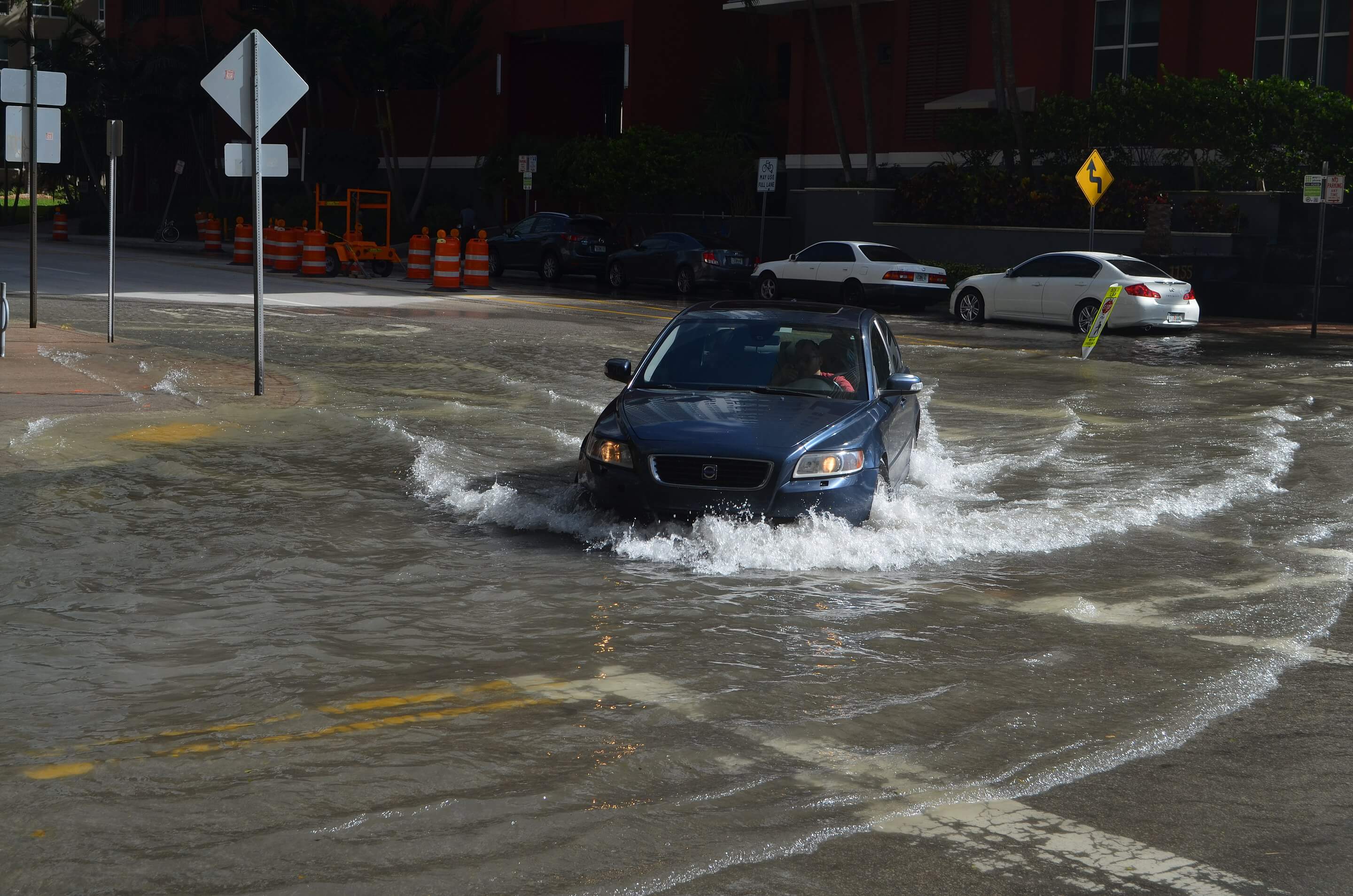Earlier this month, the city of Miami released a draft version of its comprehensive plan to combat the effects of climate change. The so-called Stormwater Master Plan (SWMP) will be implemented to alleviate the threat of flooding throughout the city, improve the quality of water in Biscayne Bay, and fortify its coastline against stronger and more frequent storm surges over the next 40 years, at an overall cost estimate of $3.8 billion.
The SWMP makes use of extensive mapping data from the city and the Federal Emergency Management Agency (FEMA) to best indicate where, how, and within what timeframe its recommended changes should be made. The report proposes a series of short-term corrective actions to be implemented within the next 50 to 70 years, including urgent updates and additions to the region’s water management systems. A series of new seawalls and breakwaters would be supplemented by adjustments to protect existing infrastructure from high water levels—watertight hatches, raised electrical equipment, and concrete slabs for additional ground clearance are just a few of the options being proposed.
The SWMP’s short-term recommendations also include more natural remedies for the dire issues at hand, such as the preservation, restoration, and creation of wetland ecosystems that naturally dissipate wave energy and inhibit storm surges. The report does not elaborate on how the construction of grey infrastructure along the shoreline, which sometimes causes substantial ecological harm, would coexist with a greater commitment to the region’s coral reefs, oyster beds, and marshes.

The report also outlines a number of long-term conceptual ideas for completion by the end of the century, most of which would be underpinned by a fundamental refashioning of Miami’s relationship to water. If climate change progresses at its current pace or accelerates, the city may have to construct elevated road networks, require that homes be built off of the ground plane, and convert certain low-lying streets into canals. While such radical propositions have yet to be formalized by local planners, they reflect both the urgency of the situation and the imaginative solutions that will likely be needed to maintain Miami’s current levels of habitability.
The fatal collapse of the 12-story Champlain Towers South condominium in nearby Surfside on June 24 has raised further questions about the strained relationship between South Florida’s built and natural landscapes, particularly as it relates to the physical integrity of the coastline’s older high-rises. While the causes of the building’s catastrophic structural failure will likely be parsed over the course of several years, early speculative reports have suggested that corrosion due to salty sea air and tidal pressure could have played a part.
According to the Washington Post, the tower was built in 1981 on artificial ground reclaimed from a coastal wetland. After the removal of the mangrove forests that naturally absorbed water and protected inland areas from ocean surges, sand was layered on top of Surfside’s porous limestone bedrock. Like many buildings in Florida and other coastal parts of the United States, Champlain Towers South was constructed on shifting ground, prone to the constant seepage of swelling groundwater into its basement.
As climate change alters and exacerbates tidal cycles, some building experts suggest that similar problems could get worse for the region’s built landscape and infrastructure, including sewage and aquifer systems. There is some hope that the solutions outlined in the SWMP will mitigate these effects, though it is unclear whether they will be able to stave off the astronomical environmental, financial, and human costs of a global climate crisis already underway in Florida.











